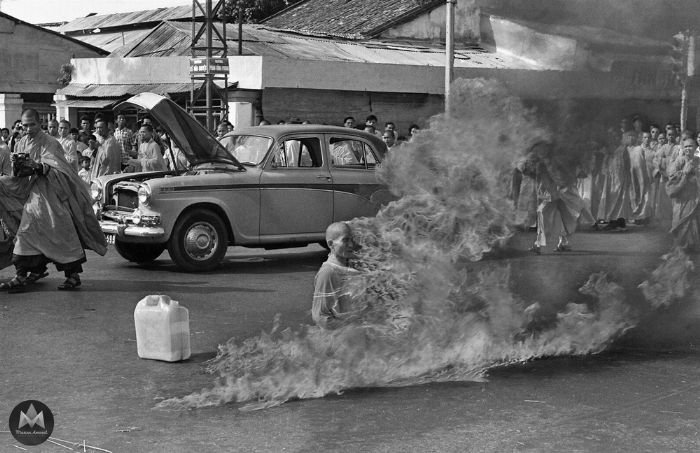Due to religious and social pressures, suicide is a largely under-reported phenomenon in our society. It is considered a sin or immoral act in many religions, and a crime in some jurisdictions whereas it is the mostly the result of our insane and corrupted society damage on individuals. Suicide is frequently highly stigmatized, and those experiencing suicidal ideation struggle to be heard and understood. Suicidal ideation frequently results from the experience of pain outweighing the individual’s coping strategies and resources for dealing with that pain.
What it is ?

According to stricter definitions of suicide, to be considered suicide, the death of the person who commits suicide must be the central component and only intention of the act, not just a certain consequence; hence, suicide bombing is considered a kind of bombing rather than a kind of suicide, and martyrdom usually escapes religious or legal proscription.
It should be noted that by the stricter definition, acts of suicide are only committed by human beings; no other healthy organism capable of reproducing that is currently known of, aside from Homo sapiens, terminates its life with the central intention being its own death.
Medicine views suicide as a mental health issue. Severe suicidal thoughts are considered a medical emergency. Mental health practitioners consistently advise suicidal people to seek help. This is especially true if the means (weapons, drugs, or other methods) are available, or if a detailed plan is in place. Suicidal patients in mental hospitals may be temporarily bound, placed in padded rooms, or incapacitated with drugs to limit access to means of suicide.
Who commit suicide ?
Suicide was the 11th leading cause of death in the United States with 29,199 suicide deaths. Suicide outnumbered homicides (16,899) by 5 to 3 but there were almost exactly the same number of suicides by firearm (16,889) as homicides (16,599). There were twice as many deaths due to suicide than deaths due to HIV/AIDS (14,802). 72% of all suicides are committed by white men. Suicide was the 3rd leading cause of death among young people 15 to 24 years following unintentional injuries and homicide. There are an estimated 8-25 attempted suicides to one completion; the ratio is higher in women and youth and lower in men and the elderly. The strongest risk factors for attempted suicide in adults are depression, alcohol abuse, cocaine use, and separation or divorce. The strongest risk factors for attempted suicide in youth are depression, alcohol or other drug use disorder, and aggressive or disruptive behaviors.
What leads to suicide ?
Many theories have been developed to explain the causes of suicide with no strong consensus with one. Nevertheless, from the known suicides, certain trends are apparent: for example, in the Western world, males die much more often than females by suicide, while females attempt suicide more often. Suicide rates in various nations have followed significant patterns over time, and it’s often possible to anticipate suicides based on a person’s social, economic, and psychological condition. The radical view would be that in the countries with the extremely high rate this may reflect the psychological problems of the whole society rather than the problems of that particular individual. However, there is insufficient data to adequately compare suicide rates among nations.
Why suicide should be avoided ?
It is preferable to wait for death to come instead of killing oneself. Suicide is universally condemned in ALL religions of the world. You will only hurt yourself in this life and the next. Don’t do it, you will sadden your friends and make happy your enemies !
If you are in suicidal crisis, call a crisis line and talk to someone about it. In the United States, you can call 1-800-273-TALK or 1-800-SUICIDE to reach a trained counselor near you.
Heroic suicide
Heroic suicide, for the greater good of others, is often celebrated. For instance, Gandhi went on a hunger strike to prevent fighting between Hindus and Muslims, and although they stopped before he died, he might have killed himself if they hadn’t. For this, he earned the respect of many.
In the 1960s, Buddhist monks, most notably Thích Quảng Ðức, in South Vietnam gained Western praise in their protests against President Ngô Đình Diệm by burning themselves to death. Similar events were reported in eastern Europe, such as Jan Palach following the Soviet invasion of Czechoslovakia. In wars, there have been numerous reports of combatants performing suicidal acts in order to save other soldiers. Not everybody would count all these actions as suicides, as the person’s death was clearly not the primary purpose. Opponents argue that these people would probably achieve a comparable result by spending the rest of their lives in active struggle.

Philosophical views
There are arguments in favor of allowing an individual to choose between life and suicide. This view sees suicide as a valid option and a human right. This line rejects the widespread belief that suicide is always or usually irrational, saying instead that it is a genuine, albeit severe, solution to real problems – a line of last resort that can legitimately be taken when the alternative is considered worse. No being should be made to suffer unnecessarily, and suicide provides an escape from suffering in certain circumstances, such as incurable disease and old age.
In the past, the Japanese were often ordered to commit seppuku, a form of ritual disembowelment suicide, by their superiors, and were expected to do so as a matter of honor, in an instance where they committed a greater dishonor to their family. They may also have done it as a matter of free choice, also for the sake of honor, and it was considered better than being taken prisoner.
A few rare groups say that people should kill themselves for the greater good. For example, the Church of Euthanasia says that people should kill themselves in order to reduce mankind’s stress on the environment.
Mass suicide
Mass suicide occurs when a number of people kill themselves together with one another or for the same reason and is usually connected to a real or perceived persecution. It sometimes occurs in religious or cultic settings. Suicide missions, suicide bombers, and kamikazes are military or paramilitary forms of mass suicide. Defeated groups may resort to mass suicide rather than capture. Suicide pacts are a form of mass suicide unconnected to cults or war that are sometimes planned or carried out by small groups of frustrated people, typically lovers. Mass suicides have been used as a form of political protest.
Notable mass suicides
The 960 members of the Israeli community at Masada, who collectively committed suicide in the first century C.E., rather than be conquered and enslaved by the Romans.
in May 1945 about 900 occupiers of Demmin in Germany collectively committed suicide in fear about the invasion of the Red Army
Japan is known for its centuries of suicide tradition, from hara-kiri ceremonial self-of Saipan preacher and head of the Peoples Temple. (It should be noted that it is believed that many of those 913 people were murdered, or forcibly injected with cyanide against their will.)

Peoples Temple (Jim Jones)
In 1978, 914 American followers of Jim Jones died in a mass murder/suicide in Jonestown, Guyana. The dead included 274 children. Alternative theories allege that most of the victims were unwillingly injected with the poison, and some even allege involvement of the CIA. However, an affadavit made by former member Deborah Layton days before the massacre testified to suicide drills called white nights in which members practiced mass suicide by ingesting poison, and in Jones’ final speech, recorded on cassette tape, he states “So my opinion is that you be kind to children and be kind to seniors and take the potion like they used to take in ancient Greece…” stating the intention that the group kill themselves while casting it as a political act: “We didn’t commit suicide, we committed an act of revolutionary suicide protesting the conditions of an inhumane world.”
Movement for the Restoration of the Ten Commandments of God
On March 17, 2000, between 780 and 1000 members of the Movement for the Restoration of the Ten Commandments of God died in a probable mass suicide in Uganda. The group had splintered from Roman Catholicism to emphasize apocalypticism and alleged Marian apparitions. They also deemed the wider world to be corrupt, seeing themselves as a Noah’s Ark of purity. Along these ends members severely restricted their speech to avoid saying anything dishonest or sinful. Curiously, the group had a feast that involved large quantities of Coca-Cola and beef before dying.
Solar Temple
From 1994 to 1997, the Order of the Solar Temple’s members became so paranoid they began a series of mass suicides, which led to roughly 74 deaths. Farewell letters were left by members, stating that they believed their deaths would be an escape from the “hypocrisies and oppression of this world.” Added to this they felt they were “moving on to Sirius.” Interestingly, a mayor, a journalist, a civil servant, and a sales manager were among the dead. Records seized by the Quebec police showed that some members had personally donated over $1 million to the cult’s leader, Joseph Di Mambro. There was also another attempted mass suicide of the remaining members, which was thwarted in the late 1990s. All the suicide/murders and attempts occurred around the dates of the equinoxes and solstices, which likely held some relation to the beliefs of the group.
Heaven’s Gate
On March 26, 1997, 39 followers of the Heaven’s Gate cult died in a mass suicide near San Diego, California. In the beliefs of the cult, this was not an act of self-extermination; they believed that they were merely “exiting their human vehicles” so that their souls could go on a journey aboard a spaceship they believed to be following comet Hale-Bopp. Some male members of the cult underwent voluntary castration in preparation for the genderless life they believed awaited them after the suicide. The victims were self-drugged and then suffocated by other members in a series of suicides over a period of three days. Thirty-nine died, most were in their 40’s and came from a wide range of backgrounds.
On March 30, 1997, Robert Leon Nichols, a former roadie for the Grateful Dead, was discovered dead in his California trailer, with a note nearby that read in part “I’m going to the spaceship with Hale-Bopp to be with those who have gone before me.” Using propane gas rather than vodka and phenobarbital to end his life, Nichols, like the cult members, had his head covered by a plastic bag and his upper torso covered with a purple shroud. Nichols’ connection with the cult is unknown.
In May 1997, two cult members who had not been present for the mass suicide attempted suicide, one succeeding in the attempt, the other going into coma for two days and then recovering. In February 1998 the survivor, Chuck Humphrey, attempted suicide, this time succeeding.
Suicidal attempt
Many suicidal people participate in suicidal activities which do not result in death. These activities fall under the designation of attempted suicide. Generally, those with a history of such attempts are almost 23 times more likely to eventually end their own lives than those without.
Parasuicide
In the technical literature the use of the terms parasuicide or deliberate self-harm (DSH) are preferred – both of these terms avoid the question of the intent of the action.
Those who self-harm are, as a group, quite different from those who attempt to die from suicide. It is of utmost importance to note that self-harm is not a suicide attempt and should never be construed as such. There is a non-causal correlation between self-harm and suicide; individuals who suffer from depression or other mental health issues are also more likely to choose suicide. DSH is far more common than suicide, and the majority of DSH participants are females aged under 35. They are usually not physically ill and while psychological factors are highly significant, they are rarely clinically ill and severe depression is uncommon.
Social issues are key: DSH is most common among those living in overcrowded conditions, in conflict with their families, with disrupted childhoods and history of drinking, criminal behavior, and violence. Individuals under these stresses become anxious and depressed and then, usually in reaction to a single particular crisis, they attempt to harm themselves. The motivation may be a desire for relief from emotional pain or to communicate feelings, although the motivation will often be complex and confused. DSH may also result from an inner conflict between the desire to end life and the desire to continue living. See the article on self-harm for an in depth discussion.
Suicidal gesture
Sometimes, a person will make actions resembling suicide attempts while not being fully committed, or in a deliberate attempt to have others notice. This is called a suicidal gesture (also known as a “cry for help”). Prototypical methods might be a non-lethal method of self-harm that leaves obvious signs of the attempt, or simply a lethal action at a time when the person considers it likely that they will be rescued or prevented from fully carrying it out.
On the other hand, a person who genuinely wishes to die may fail, due to lack of knowledge about what they are doing; unwillingness to try methods that may end in permanent damage if they fail or harm to others; or an unanticipated rescue, among other reasons. This is referred to as a suicidal attempt.
Distinguishing between a suicidal attempt and a suicidal gesture may be difficult. Intent and motivation are not always fully discernible since so many people in a suicidal state are genuinely conflicted over whether they wish to end their lives. One approach, assuming that a sufficiently strong intent will ensure success, considers all near-suicides to be suicidal gestures. This however does not explain why so many people who fail at suicide end up with severe injuries, often permanent, which are most likely undesirable to those who are making a suicidal gesture. Another possibility is those wishing merely to make a suicidal gesture may end up accidentally killing themselves, perhaps by underestimating the lethality of the method chosen or by overestimating the possibility of external intervention by others. Suicide-like acts should generally be treated as seriously as possible since if there is an insufficiently strong reaction from loved ones from a suicidal gesture, this may motivate future, more committed attempts.
An important distinction has also been made (see Erwin Stengel, ‘Suicide and Attempted Suicide’) between those who kill themselves and did not mean to, and those who did not kill themselves but did mean to. Thus a ‘Suicide’ (noun) may either succeed or fail in his/her goal (ie. succeed in killing himself/herself or not) and an ‘Attempted Suicide’ (noun) may either succeed or fail in his/her goal (e.g., succeed in ‘making a cry for help’ or fail and, in doing so, probably die).
This distinction, if correctly drawn, can have important ramifications for the treatment of people who are suicidal.








